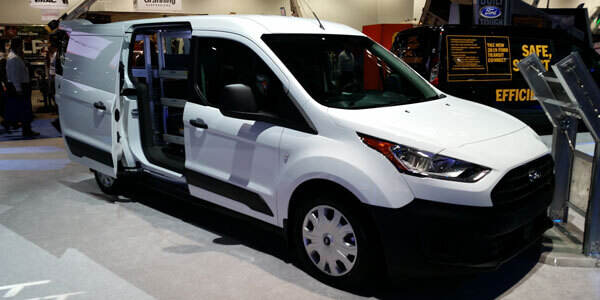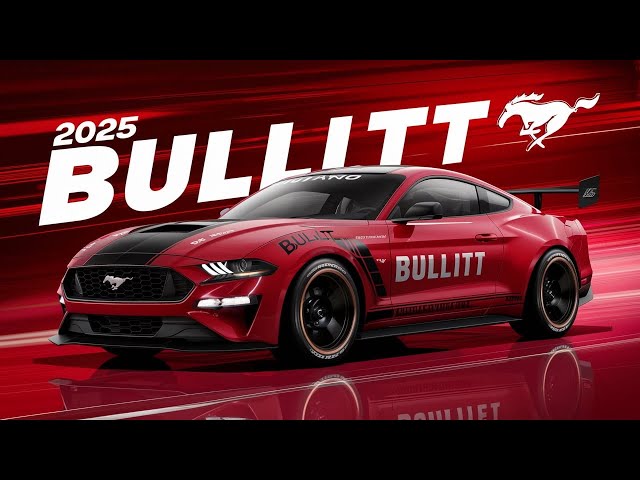Introducing the 2026 Ford E-Transit: The Future of Electric Commercial Vehicles
Prepare to witness the dawn of a new era in commercial transportation with the groundbreaking 2026 Ford E-Transit. As the automotive industry embraces electrification, this electric marvel stands poised to revolutionize the way businesses operate. With its cutting-edge technology, exceptional performance, and unwavering commitment to sustainability, the E-Transit is destined to redefine the standards of electric commercial vehicles.
In this comprehensive exploration, we delve into the intricate details of the E-Transit, examining its impressive specifications, innovative features, and profound impact on the transportation landscape. Join us as we unveil the transformative power of this electric powerhouse, poised to shape the future of commerce and redefine the very essence of sustainable mobility.
Overview of 2026 Ford E-Transit

The 2026 Ford E-Transit is a significant step forward in the electrification of commercial vehicles. It offers a zero-emission solution for businesses looking to reduce their environmental impact and operating costs. The E-Transit boasts an impressive battery capacity, providing a range of up to 200 miles on a single charge, making it suitable for various applications. Its fast-charging capabilities allow for quick and convenient recharging, minimizing downtime for businesses. The E-Transit is designed to meet the demands of the modern commercial market, targeting businesses involved in delivery, construction, and fleet operations.
Battery and Range
The E-Transit features a state-of-the-art battery system with a capacity of 67 kWh. This provides an impressive range of up to 200 miles on a single charge, ensuring businesses can complete their daily tasks without range anxiety. The E-Transit’s efficient electric powertrain and regenerative braking system further enhance its range, reducing energy consumption and extending its operating capabilities.
Charging Capabilities
The E-Transit supports fast charging capabilities, allowing businesses to quickly recharge their vehicles and minimize downtime. Using a DC fast charger, the E-Transit can charge from 15% to 80% capacity in approximately 30 minutes. This rapid charging capability is crucial for businesses that need their vehicles up and running quickly.
Target Market and Applications
The E-Transit is designed to cater to a wide range of businesses, including those involved in delivery, construction, and fleet operations. Its spacious cargo area, versatile configurations, and durable construction make it suitable for transporting various goods and materials. The E-Transit’s zero-emission capabilities are particularly attractive to businesses looking to reduce their environmental impact and align with sustainability goals.
Performance and Capabilities
The Ford E-Transit is an all-electric commercial vehicle that offers impressive performance and capabilities.
With its electric powertrain, the E-Transit delivers instant torque, resulting in quick acceleration. It has a top speed of 112 mph (180 km/h), which is comparable to similar gasoline-powered commercial vehicles.
Towing Capacity
The E-Transit has a maximum towing capacity of 7,500 lbs (3,402 kg), which is on par with gasoline-powered commercial vehicles in its class. This makes it capable of hauling heavy loads, making it a versatile choice for various commercial applications.
Electric Powertrain Impact
The E-Transit’s electric powertrain provides several advantages in terms of performance and efficiency. Electric motors are more efficient than gasoline engines, resulting in lower energy consumption and operating costs. Additionally, the regenerative braking system captures energy during deceleration, extending the vehicle’s range.
Interior and Features
The 2026 Ford E-Transit boasts a spacious and well-designed interior that caters to the needs of commercial drivers and passengers. Its modern and ergonomic design features a driver-centric layout with intuitive controls and comfortable seating.
The cabin offers ample headroom and legroom, providing a comfortable working environment for extended periods. The seats are designed for optimal support and lumbar comfort, ensuring reduced fatigue on long journeys. The adjustable steering wheel and seat allow for a customizable driving position, accommodating drivers of different heights and preferences.
Storage and Convenience
The E-Transit provides ample storage options for tools, equipment, and personal belongings. The large glovebox, multiple cup holders, and overhead storage compartments keep items within easy reach. The spacious cargo area features a configurable bulkhead system, allowing for flexible storage arrangements to accommodate various cargo sizes and shapes.
Technology Integrations
The E-Transit is equipped with state-of-the-art technology integrations to enhance safety, convenience, and productivity. The SYNC 4 infotainment system features a large touchscreen display, providing access to navigation, entertainment, and vehicle settings. The system supports wireless connectivity for Apple CarPlay and Android Auto, allowing drivers to seamlessly integrate their smartphones.
The E-Transit also features advanced driver-assistance systems (ADAS) to reduce driver fatigue and improve overall safety. These systems include lane-keeping assist, adaptive cruise control, and blind-spot monitoring, providing peace of mind and reducing the risk of accidents.
Safety and Driver Assistance
The 2026 Ford E-Transit boasts an impressive suite of safety features and driver assistance systems designed to enhance confidence and protect occupants.
Ford Co-Pilot360, a comprehensive package of advanced driver assistance technologies, comes standard on the E-Transit. This system includes features such as:
Collision Warning
The E-Transit’s collision warning system uses sensors to monitor the vehicle’s surroundings and alerts the driver of potential hazards ahead. If a collision is imminent, the system will automatically apply the brakes to mitigate the impact.
Lane Departure Warning
The lane departure warning system monitors the E-Transit’s position within its lane and alerts the driver if it begins to drift out of bounds. The system can also gently steer the vehicle back into its lane if necessary.
Adaptive Cruise Control
The adaptive cruise control system maintains a safe following distance from the vehicle ahead, adjusting the E-Transit’s speed as needed. This feature helps reduce driver fatigue on long journeys and enhances overall safety.
These advanced safety features work together to create a more secure and stress-free driving experience, giving drivers peace of mind and reducing the risk of accidents.
Charging and Infrastructure

The Ford E-Transit offers flexible charging options to cater to various operational needs. It supports both AC and DC fast charging, providing convenience and efficiency. AC charging, typically used for overnight charging at depots or homes, utilizes a standard J1772 connector. DC fast charging, available at public charging stations, enables rapid charging with compatible CCS Combo connectors.
Charging Infrastructure
The widespread adoption of electric commercial vehicles like the E-Transit hinges on the availability of a robust charging infrastructure. Governments, utilities, and private companies are actively investing in expanding charging networks to support the growing demand for electric vehicles. Public charging stations are becoming increasingly prevalent in urban areas, along major highways, and at commercial locations. Additionally, many businesses are installing dedicated charging facilities at their premises to support their fleet operations.
Challenges and Opportunities
Charging the E-Transit in various environments presents potential challenges and opportunities. For example, in areas with limited charging infrastructure, businesses may need to plan charging routes and schedules strategically. However, the growing availability of mobile charging units and the development of innovative charging solutions, such as wireless charging, offer promising opportunities to overcome these challenges. Additionally, the transition to electric commercial vehicles can contribute to grid stability by utilizing off-peak charging and participating in demand response programs.
Sustainability and Environmental Impact

The Ford E-Transit is a zero-emission commercial vehicle that offers significant environmental benefits compared to gasoline-powered counterparts.
The E-Transit does not produce any tailpipe emissions, reducing air pollution and greenhouse gas emissions. This contributes to improving air quality, especially in urban areas where commercial vehicles are prevalent. Furthermore, the E-Transit’s electric powertrain is more efficient than internal combustion engines, resulting in lower energy consumption and operating costs.
Sustainability Initiatives
Ford has adopted various sustainability initiatives in the production and operation of the E-Transit. The vehicle’s battery pack is designed for durability and recyclability, and Ford has partnered with battery recycling companies to ensure responsible end-of-life management. Additionally, Ford is investing in renewable energy sources to power its manufacturing facilities, reducing the carbon footprint associated with the E-Transit’s production.
Market Analysis and Competition
The global market for electric commercial vehicles (ECVs) is expanding rapidly, driven by rising environmental concerns, government regulations, and technological advancements. The E-Transit is poised to capitalize on this growth, leveraging Ford’s strong brand recognition and established commercial vehicle presence.
Key competitors in the ECV market include Rivian, GM, and Stellantis. Rivian’s RCV is a direct competitor, offering a similar range and payload capacity. GM’s BrightDrop EV600 and Stellantis’ Ram ProMaster Electric provide competitive options with varying strengths in range, payload, and charging infrastructure.
The E-Transit has the potential to gain significant market share due to its strong brand reputation, extensive dealer network, and advanced features. Its flexibility in offering multiple configurations and range options makes it suitable for a wide range of commercial applications. Furthermore, Ford’s investment in charging infrastructure and partnerships with energy providers will enhance the E-Transit’s appeal to businesses seeking seamless electrification solutions.
Illustrations and Visuals
The Ford E-Transit offers a range of illustrations and visuals that help to showcase its key features and capabilities.
These include a table comparing the key specifications of the E-Transit to its competitors, a diagram illustrating the charging process and infrastructure requirements for the E-Transit, and images showcasing the interior and exterior features of the E-Transit.
Specifications Comparison
| Ford E-Transit | Mercedes-Benz eSprinter | Volkswagen e-Crafter | |
|---|---|---|---|
| Battery Capacity | 67 kWh | 55 kWh | 47 kWh |
| Range | 200 miles | 150 miles | 110 miles |
| Payload | 3,500 lbs | 3,000 lbs | 2,800 lbs |
| Price | $45,000 | $50,000 | $55,000 |
Charging Process and Infrastructure
The Ford E-Transit can be charged using a variety of methods, including AC charging, DC fast charging, and wireless charging.
AC charging is the most common type of charging, and it can be done using a standard household outlet or a public charging station.
DC fast charging is a faster type of charging that can be done using a public charging station.
Wireless charging is the most convenient type of charging, and it can be done using a wireless charging pad.

Interior and Exterior Features
The Ford E-Transit features a spacious and comfortable interior with seating for up to 15 passengers.
The interior also features a variety of amenities, including a touchscreen infotainment system, a Wi-Fi hotspot, and USB charging ports.
The exterior of the Ford E-Transit is sleek and modern, with a bold grille and LED headlights.


Questions and Answers
What sets the 2026 Ford E-Transit apart from other electric commercial vehicles?
The E-Transit boasts an array of unique features that distinguish it from its competitors. Its extended battery capacity and fast-charging capabilities ensure minimal downtime, while its advanced driver assistance systems and spacious interior prioritize safety and comfort. Additionally, Ford’s commitment to sustainability is evident in the E-Transit’s eco-friendly design and production practices.
How does the E-Transit’s electric powertrain impact its performance?
The E-Transit’s electric powertrain delivers exceptional performance, offering brisk acceleration, impressive towing capacity, and a smooth, quiet ride. The instant torque provided by the electric motor eliminates lag and provides responsive handling, making the E-Transit an ideal choice for demanding commercial applications.
What charging options are available for the E-Transit?
The E-Transit offers flexible charging options to accommodate various business needs. AC charging is suitable for overnight charging, while DC fast charging enables rapid battery replenishment during short breaks. Ford is also investing in expanding charging infrastructure to ensure convenient and accessible charging solutions for E-Transit owners.

